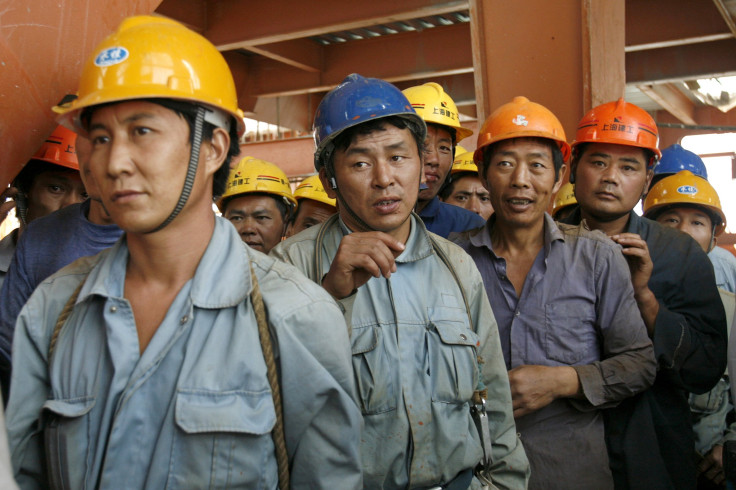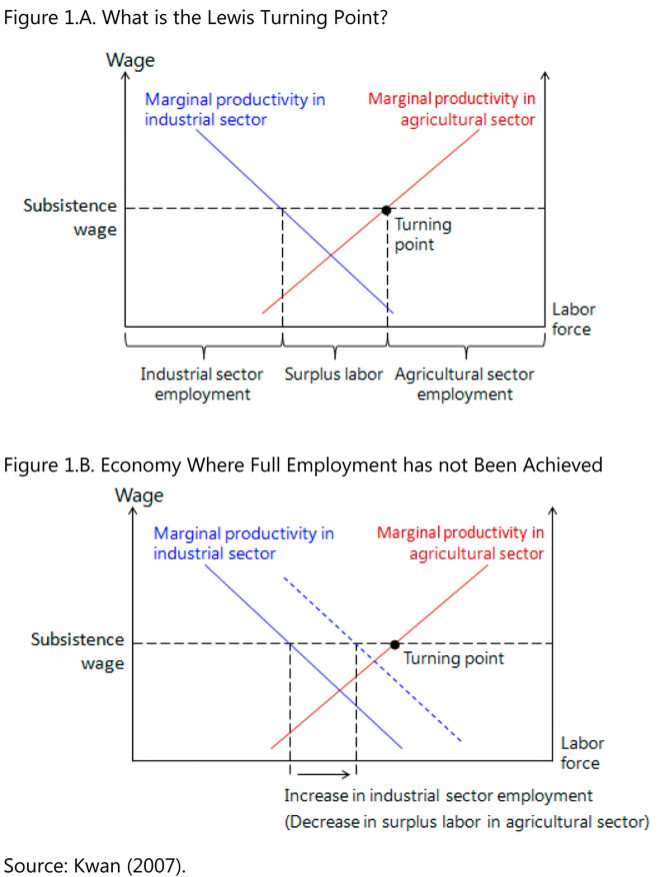China's Declining Labor Pool Approaching the ‘Lewis Turning Point’: IMF Paper

A spate of worker unrest and rising wages in China suggest that the world’s second-largest economy is very close to what economists call the “Lewis turning point,” when low-cost manufacturing industries become less competitive, forcing a change in the nation's growth structure.
A new paper released by the International Monetary Fund economists Mitali Das and Papa N'Diaye -- “Chronicle of a Decline Foretold: Has China Reached the Lewis Turning Point?” -- predicts China would move from a vast supply of low-cost workers to a labor shortage economy sometime between 2020 and 2025. And there isn’t much Beijing can do about it.
“China is on the eve of a demographic shift that will have profound consequences on its economic and social landscape,” Das and N’Diaye wrote. “Within a few years the working- age population will reach a historical peak, and then begin a precipitous decline.”

When an economy first becomes industrialized, it grows very fast by importing foreign technology and employing capital and plentiful, cheap labor mainly drawn from the agricultural sector. The migrant labor force accepts lower wages corresponding to the living standards prevalent in farming.
However, a point is reached when no more labor is forthcoming from the underdeveloped sector and wages begin to rise. This is known as the “Lewis Turning Point,” named after the late economist and 1979 Nobel laureate W. Arthur Lewis.

This is a key reason why companies like Caterpillar Inc. (NYSE: CAT) and Ford Motor Co. (NYSE: F) are either “re-shoring” from China back to the U.S. or relocating their factories to India and the ASEAN economies.
It has long been predicted that China’s working-age population will decline because of a declining birth rate and Beijing’s one-child policy.
Earlier this month, China’s National Bureau of Statistics said the size of the working-age population shrank for the first time in recent decades, in 2012. By the end of December China's population between 15 and 59 was 937.27 million, a decrease of 3.45 million from 2011. China introduced its controversial one-child policy in the late 1970s to control population growth.

China can try to delay reaching the “Lewis Turning Point” by relaxing its one-child policy, encouraging greater labor force participation through "hukou" reform and relying more on private consumption rather than investment for economic growth, said the researchers.
The coming of the “Lewis Turning Point” is of great significance to China’s economy. It’s a chance for China to overcome its problems and shift to a more sustainable and efficient economic growth model.
Many countries including South Korea and Japan have experienced such a change. Japan passed the "Lewis Turing Point" in the 1960s, while South Korea passed it in the early to mid-1990s. Both countries managed to upgrade their economic structures and become fully industrialized countries.
Read the IMF paper here:
© Copyright IBTimes 2025. All rights reserved.






















